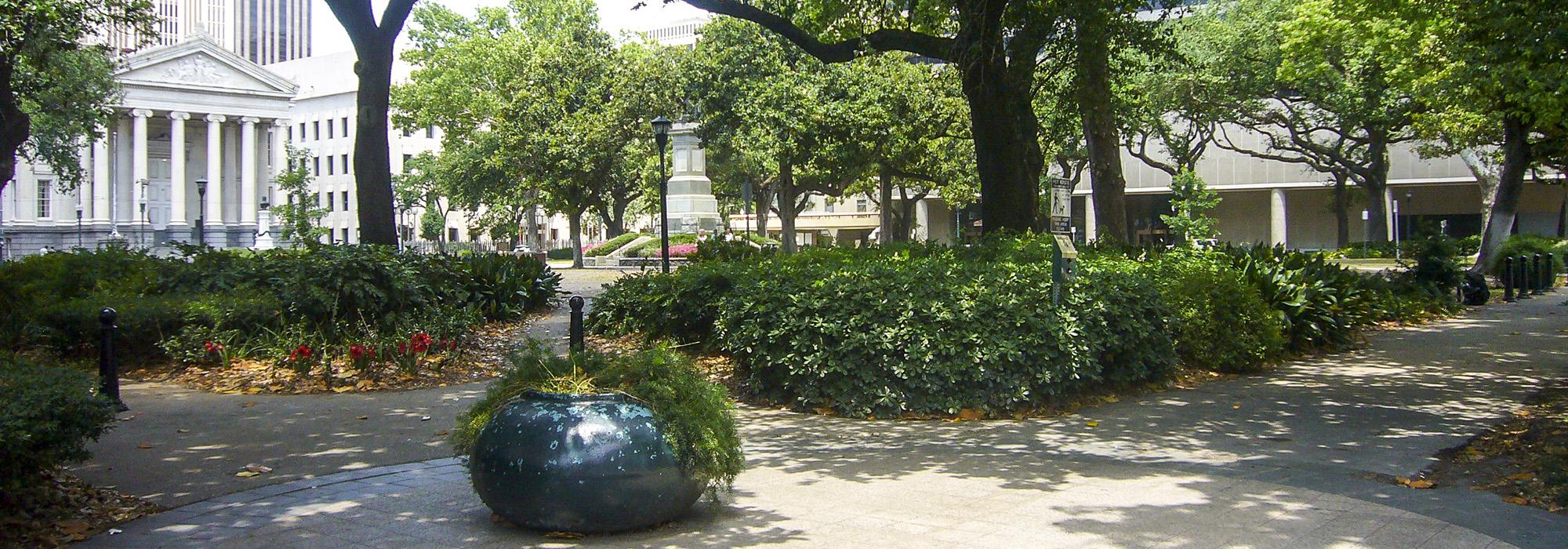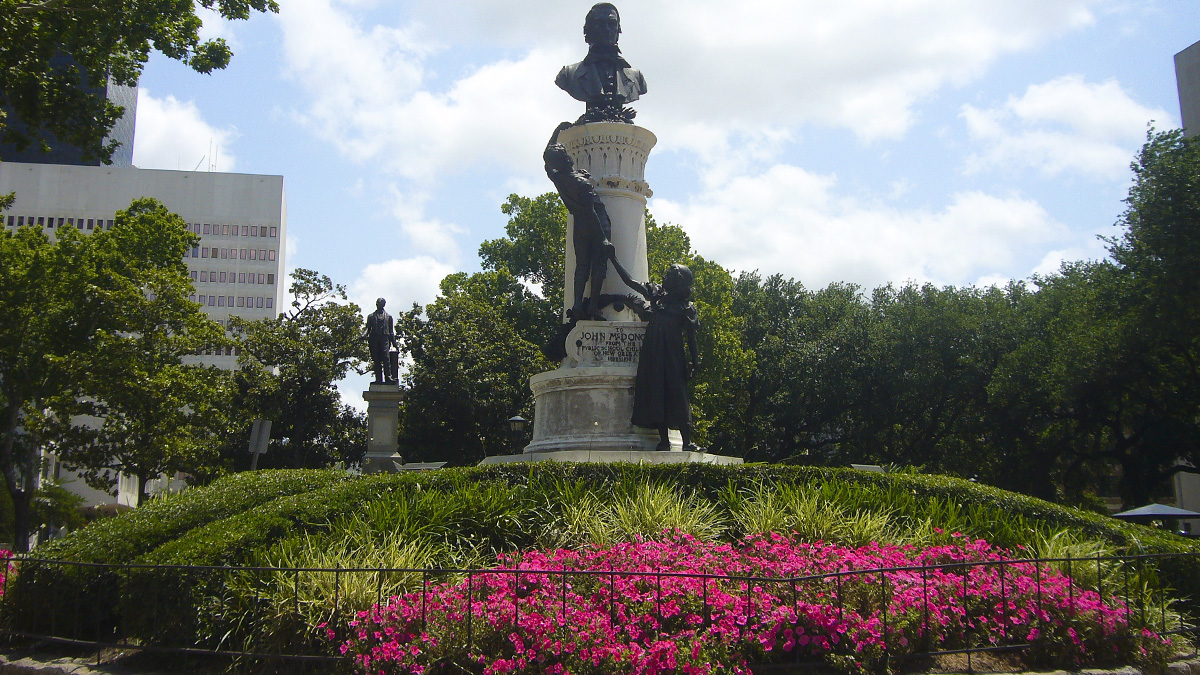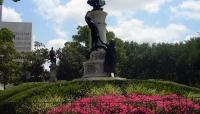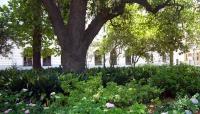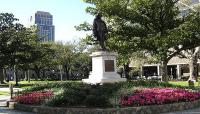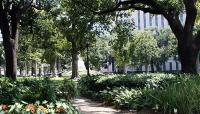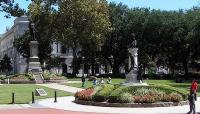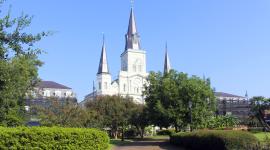Landscape Information
Established in 1788 as Place Gravier and sited across from the old City Hall, this square, designed by surveyor Charles Laveau Trudeau, is the second oldest public space in New Orleans. It was renamed for the Marquis de Lafayette in honor of his visit to the city in 1825. Throughout the nineteenth century, the square consisted of a lawn transected by two perpendicular walks, surrounded by an ornamental iron fence with four gated entrances in the center of each block. A perimeter of deciduous shade trees lined the fence’s interior, with a paved walk that circumscribed the central green. The fence was removed for scrap metal during World War I.
At the turn of the 20th century, sculptural monuments were introduced to the park, including bronze statues of Benjamin Franklin, John McDonogh, and Henry Clay, each surrounded by planting beds filled with African irises. The east-west axis has been removed; now four curved, diagonal paved walks radiate to each corner from the center. The park is circumscribed by an outer brick sidewalk and an inner concrete sidewalk, which are separated by azaleas and other flowering shrubs. Large shade trees, including live oaks, southern magnolias, yaupons, and sycamores, provide a leafy canopy over the lawn and around the park's perimeter. Many of the trees were badly damaged by Hurricane Katrina in 2005, leading to the founding of the Lafayette Square Conservancy, which works with the city’s parks department to maintain and preserve the square.



